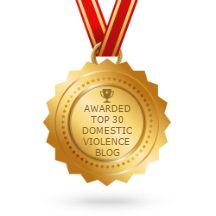1. Use Social Media-Social media has an empowering effect send articles, with the click of a button, you can spread the word. Youth do not need the mainstream media to voice their views!
2. Report– Report photos that exploit girls and young women when you see them on social media sites like Facebook and Instagram
3. Be media literate and critical-Be critical of what you see otherwise it become normalized and we are desensitized! The media regularly uses images of violence against women and objectifies girls and women to sell products. Women are also objectified in movies, music and magazines. If you see an ad or commercial that is sexist and degrading towards women – write or e-mail the company and don’t by their products.
4. Interrupt sexist/homophobic and transphobic language-Words are powerful, especially when spoken by people who have power over others. We live in a society where words are used to put girls and women down. Gendered name-calling is used and sends the message, that, girls and women are less than fully human. When girls and women are seen as inferior, thus, it becomes easier to treat them with less respect and ignore their rights. Changing the way you speak can change the way you think.
5. Interrupt abuse –If you see a guy push a girl into her locker at school that you say something to stop him from continuing to be abusive. If you are at a party and one of your peers or friends is intoxicated and being lead away by a guy[s] stop him from being alone with her and help her get home.
6. Stop street harassment-Don’t engage in any forms of sexual harassment, such as catcalling, and unwanted touching. And don’t let your friends and peers engage in those behaviors either! It’s not just enough that you don’t engage in those behaviors, be empowered to speak up against friends and peers who do! Don’t look the other way!
7. Come up with an action plan– Plan ahead what you would do in situations where either, people you know or strangers, are being abusive and/or sexist. Sometimes it’s easier to interrupt and stop the abuse when you know what you will say and how you will approach the situation before hand.
8. Recognize the role of gender in violence- While boys and men do experience abuse it is important to remember that the majority of victims of abuse are female and the majority of perpetrators of violence are boys and men.
9. Stop Victim Blaming– Don’t blame girls and women for how they choose to dress or judge their behavior. Violence can’t be prevented through limiting the freedoms of girls. This only allows the violence to continue because perpetrators become invisible, and those who witness remain silent.
10. Stop rape culture– One way to stop rape culture is by not allowing people to perpetuate rape culture through minimizing/normalizing rape through jokes. When a friend or peer tells a joke about being violent against girls and women in some way, say you don’t find it funny and let them know that it is not okay.
11. Call gender violence what it is-not bullying-Using the term bullying to label violence against girls and women masks the truth of what’s happening. When someone you know at schools is experiencing gender violence either in a dating relationship or from their peers at school, by labeling it correctly you are stopping a culture, which normalizes and minimizes violence against girls and women.
12. Educate yourself on the roots of violence-Violence against girls and women stems in male dominance and the socialization of men. Become educated on the roots of violence against girls and women! Read books and articles, join a group at school and attend any training available to you. Learn about the myths and realities of gender violence and understand how our society condones it.
13. Create safe spaces to discuss gender violence– Create an after school club or group where you can openly discuss your views and experiences and support your peers.
14. Confront yourself/your ideas-Reflect on your beliefs and why you have those beliefs and your actions, and opinions. Be honest and admit your faults and commit to changing the way you think and act.
15. Stop stereotyping men’s and women’s roles-Social roles and expectations may affect a man’s decisions about relationships. Men are taught that expressing feelings is not masculine. Examining your social role and learning ways to express feelings directly and non-violently can help to create deeper and more meaningful interpersonal relationships. You don’t have to prove yourself.
16. Remember violence is a choice- Don’t make excuses for friends and peers who are violent. Stop supporting the notion that violence is due to mental illness, lack of anger management skills, alcohol and drug use, stress, etc.
17. Be Supportive-When girls tell you about violence they have experienced in their lives believe them. It is extremely rare for girls to make up a story about rape or abuse. You may be the first and only person she tells. Believe her and support her decisions, without being judgmental.
18. Be aware of resources for girls and women-Support girls and women by providing information on where they can get further support and safety. Familiarize yourself with the resources for girls and women in your community, including women’s centers, counseling centers and health service organizations. Be a positive resource for girls close to you by sharing information and making referrals.
19. Talk to others about ending violence and be a mentor– Volunteer your time to preventing violence by speaking to others. This brings awareness to the issue, which will motivate others to act.
20. Understand consent- Boys and young men need to be respectful when entering into a sexual relationship and should not feel entitled to girls and women’s bodies. Just because you are a ‘nice guy’ does not mean you should have any expectations.
Remember gender violence is not an individual issue- We all have a role in ending violence against girls and women and it is important that we all take responsibility in ending the violence.
During Prevention of Violence Against Women Week we will engage our online community in violence prevention by remembering we all have a role to play in preventing violence against girls and women as individuals, in our relationships, in our community and in society.
For more information about “It’s in Your Hands”, please visit:
Preventing Violence Against Women – It’s In Your hands
Gender Violence in the Workplace





